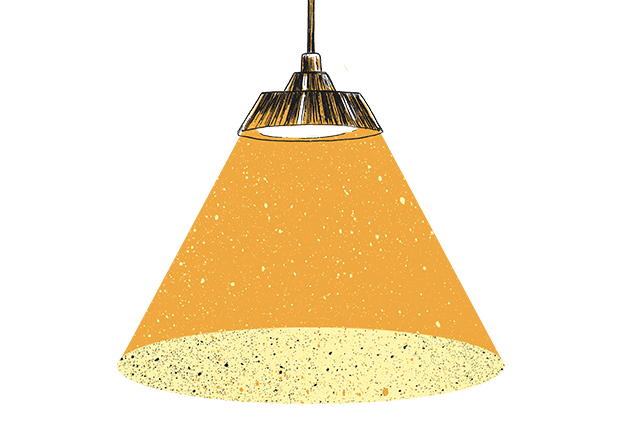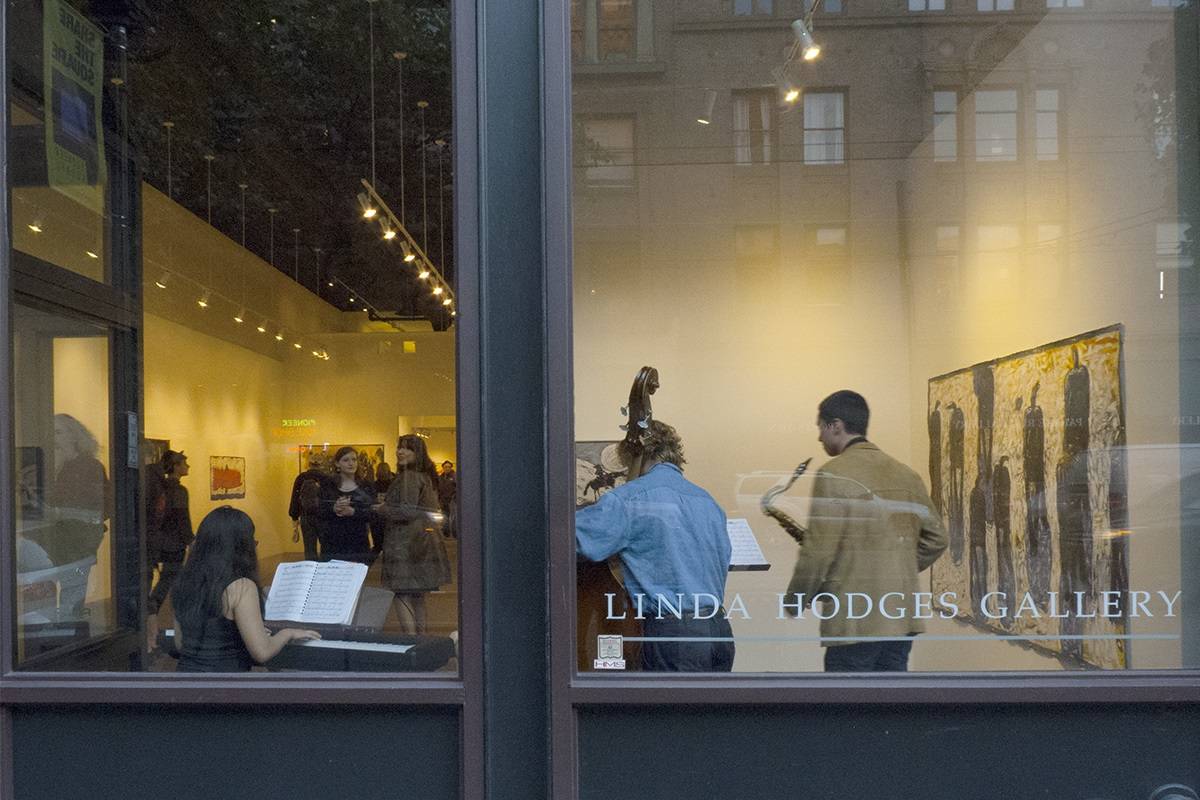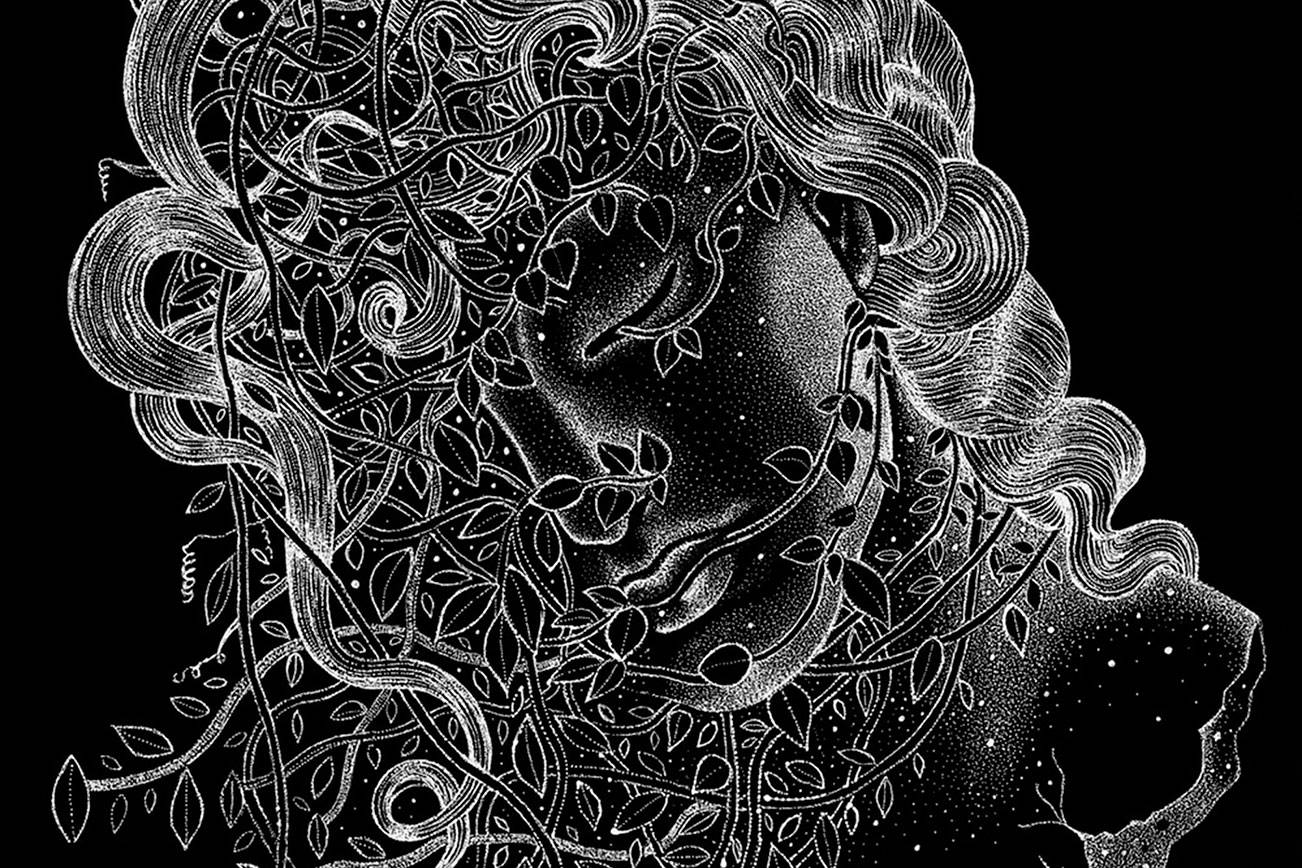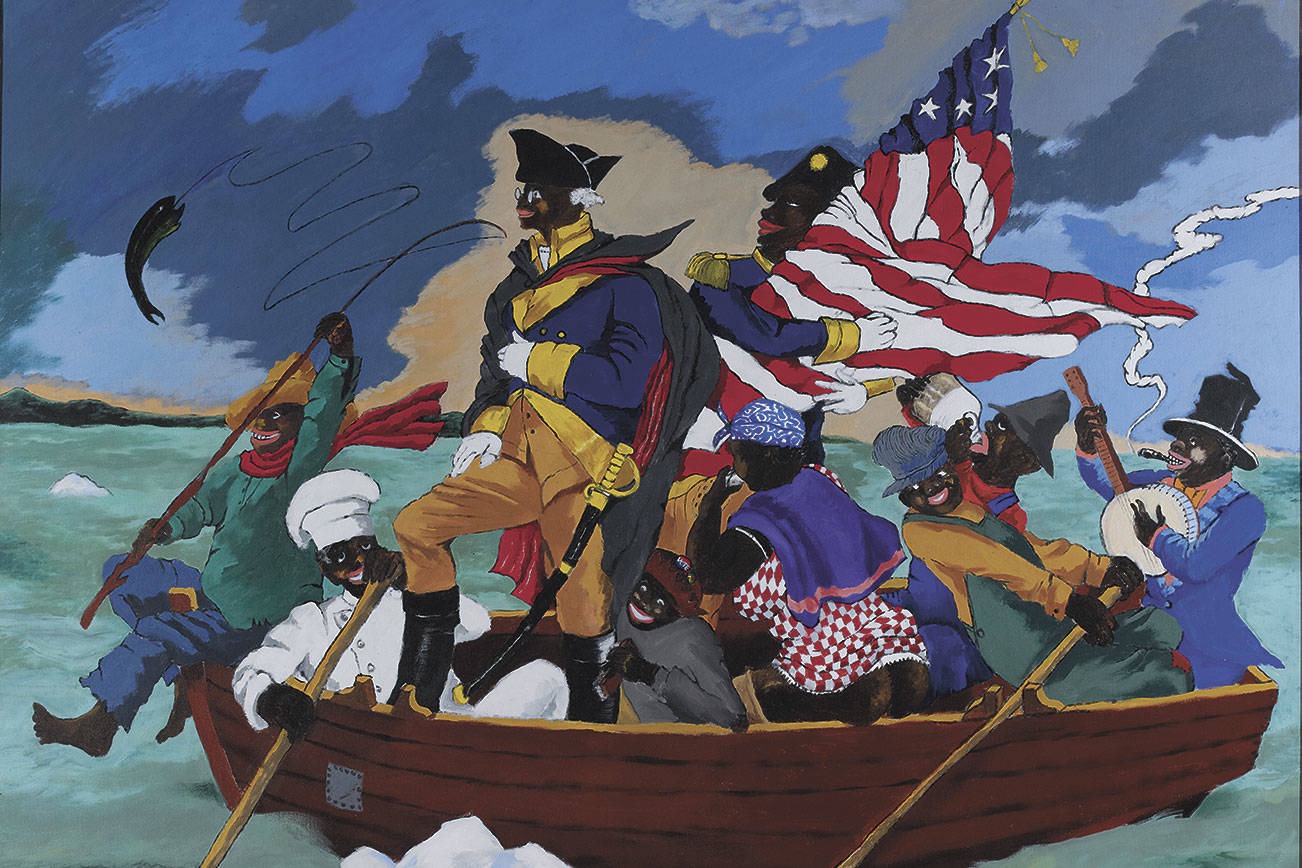August saw the tenth anniversary of James Schlesinger’s 2004 Pentagon study of abuses at Abu Ghraib prison. The anniversary was met with little notice, especially in galleries and museums.
But when the iconic figure of Ali Shallal al-Qaisi first appeared—hooded, standing on a box with arms extended—it was a shock, a pitiable emblem of human frailty and cruelty embraced by protesters worldwide. In political and street art, the new outrage against torture was made manifest. Al-Qaisi’s image was raised in marches, placed subversively in silhouette on walls of iPod ads, and combined ironically with that paragon of pacifism and redemptive suffering—Christ himself.
As powerful as it may be, such protest art is inherently ephemeral. Effigies and banners and flyers often lead a brief, rough life, exposed to the elements and crowds. Even if such ephemera survive, they will not likely be treated with any reverence. Many of the artists—who create at their own expense and sometimes their own peril—would likely be unhappy to see their work contained in a guarded vitrine, part of the very establishment they sought to challenge.
But what of artists aligned with the establishment, their work comfortably in the canon? Art, we are told, is meant to document and also challenge convention, to increase awareness of our condition and that of others. Nothing should be off limits, especially significant events by which our sympathies and loyalties are challenged. Images of violence are ubiquitous in our culture, and artists in the past century have frequently used such imagery. (Think of the A-bomb cloud, the lynching tree, Hitler’s concentration camps, the Tiananmen Square tank protester, or Kim Phuc, the 9-year-old “napalm girl” photographed during the Vietnam War.) So one must question why the fine arts seem so wary to broach the subject of torture as it occurs today.
In December, the Senate report on the CIA’s “enhanced interrogation” elucidated how gruesome—and sometimes fatal—U.S. practices have been at Guantanamo Bay (and likely beyond) during the first decade of this century. In part because the names of so-called detainees are often classified, the victims of such torture are mostly absent in the mainstream media. Meanwhile, polls indicate that a majority of Americans support the use of torture—even when aware that some captives are innocent and have no useful intelligence.
How should art respond? Historically, the aesthetics of pain have transfixed us, perhaps first peaking in the medieval era, with its gory martyrs and crucifixions. The agony of severed and punctured saints was seen as redemptive, unlike the foreboding portraits of hell. Elsewhere and for centuries to come, scenes of suffering indicted enemies of the church and state—barbarians, heretics, idolaters.
In short, the depiction of torture is almost never a protest against the established order, but propaganda for it. Until only recently (meaning the past century in some lucky Western nations), an artist who humanized the enemy and questioned authority risked exile or death.
A rare example of a courtly artist who treated atrocity in an honest manner was Goya. His Disasters of War prints were unprecedented in their depictions of wartime atrocities in early 19th-century Spain, preceding the restoration of the Bourbon monarchy. Goya shies from nothing: executions, rows of bodies, mutilated torsos and heads impaled on dead trees. His engravings survived because he—a servant of the court—never publicly acknowledged the protest being violently suppressed, and because they were not published until 35 years following his death, long after there could be any accountability.
In 20th-century America, Leon Golub stands out as one of the first to frankly depict torture in entire figurative series, variously titled Vietnam, Napalm, and—germane to current events—Interrogation. In his massive paintings, groups of larger-than-life American soldiers brutalize men and women. Golub was briefly successful in this explicitly political work, but today he isn’t nearly as famous as other artists from his heyday during the ‘60s and ‘70s. He also has few successors. Confronting torture will always be less marketable than pop culture and color therapy, after all.
Torture as an artistic subject is the last great taboo in a culture that considers itself humane and compassionate. In fact—in a disturbing bit of doublespeak—commentators who rationalize torture suggest that it is necessary if we are to defend our supposedly enlightened culture against terrorists, even though attempting to benefit from that suffering indicts our own humanity. That’s not an easy thing to face.
However, torture symbolism in art has remained a common cathartic device. During the last century, the paintings of iconoclast and masochist Francis Bacon explored modern anxiety and alienation by stripping the redemptive aspects from images of martyrdom and crucifixion. Surrealists H.R. Giger and Zdzisław Beksiński employed images of torture and eroticized violence. But again, there’s no political or protest component to such work. Instead, these images can be seen as the same sublimation of savagery that has made violent spectacles an enduring delight for a mob: from gladiatorial games in Rome to the perverse ingenuity of Inquisition-era torture and executions; from Grand Guignol theater to Hollywood slasher films and “torture porn.”
The artist’s tendency toward detachment from troubling images makes an honest and empathetic depiction of torture very tricky. In his 2007 book The Abu Ghraib Effect, art historian Stephen Eisenman examines depictions of torture and suffering in art over the centuries. In doing so he identifies the pathos formula, by which artists have represented suffering in ways that beautify or redeem it, thereby making it palatable or even erotic to viewers. He compellingly argues that images that include sexual humiliation, such as photos from Abu Ghraib, may convince viewers that the victims deserve their fate—or even enjoy it.
Even if today’s artists could confront torture in a non-exploitative fashion, few institutions are likely to show such work. In 2010, under fire from conservative critics, the Smithsonian punted David Wojnarowicz’s short film A Fire in My Belly, made in response to the AIDS crisis and featuring a crucifix overrun with ants. (Only Tacoma Art Museum was willing to screen the film, in 2012, as part of the broader show, Hide/Seek.)
It’s a small miracle that paintings from Fernando Botero’s Abu Ghraib series were shown at Manhattan’s Marlborough Gallery and the Berkeley Art Museum (in 2006 and 2011, respectively). Botero’s compassionately robust, isolated figures successfully humanize the prisoners without making a fetish of their suffering.
Meanwhile Richard Serra clumsily went the other route by appropriating al-Qaisi’s silhouette for a lithograph emblazoned “FUCK BUSH.” The Whitney not only included a version of Serra’s lithograph in its 2006 Biennial, it used it for posters (scoured to instead read FUCK B S ). The lazy image is not a comment on torture, but on the proliferation of the al-Qaisi meme in street art; only Serra is less self-aware, more smug than Banksy and his fellow street artists.
Who’s making art about Abu Ghraib and Gitmo today? Where are the images of waterboarding and Lynndie England? Artists seem to be ignoring them as best they can—unfortunate, since the only thing worse than regarding torture as taboo is not regarding it at all.
T
.S. Flock is a Seattle-based writer on contemporary visual and performing arts in the Pacific Northwest.








